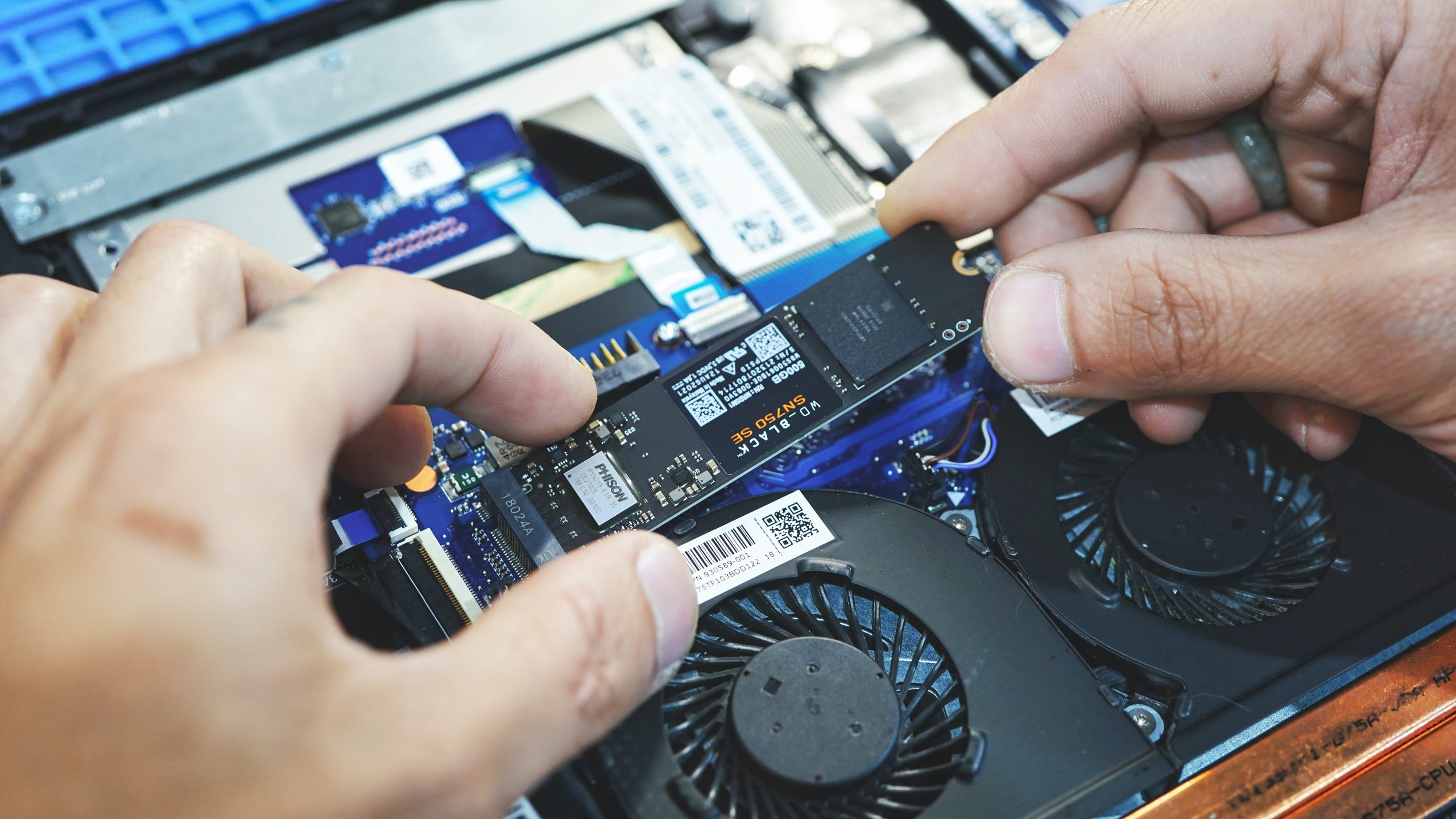Solid-State Drives (SSDs) have revolutionized the world of data storage, providing faster and more reliable alternatives to traditional Hard Disk Drives (HDDs). If you’re curious about the incredible technology behind SSDs and how they’ve transformed the digital landscape, you’re in the right place. In this article, we’ll explore SSDs from top to bottom, shedding light on their composition, functionality, benefits, and much more.

I. Introduction to SSDs
The Emergence of SSDs
Solid-State Drives, or SSDs, are a groundbreaking invention that has transformed the way we store and access data. Unlike their older sibling, the Hard Disk Drive (HDD), SSDs have no moving parts. They utilize NAND flash memory to store data, leading to improved performance and reliability.
How do SSDs Work?
SSDs function by storing data in interconnected memory chips. These chips consist of numerous NAND cells, which are organized into pages and blocks. When data is written to an SSD, it’s stored in these NAND cells using electrical charges. Reading data involves measuring these charges. This process eliminates the need for physical read/write heads found in HDDs, significantly enhancing data access speed.

The Anatomy of an SSD
Components of an SSD
An SSD comprises various components, including NAND flash memory, a controller, cache memory, and more. These components work together seamlessly to deliver swift and efficient data storage and retrieval.
NAND Flash Memory
NAND flash memory is the heart of an SSD. It is where your data is stored in the form of electrical charges. The two main types of NAND flash memory are Single-Level Cell (SLC) and Multi-Level Cell (MLC), each offering unique benefits in terms of speed, durability, and cost.
Controller
The controller in an SSD acts as the brain, managing data operations, error correction, and wear leveling. It ensures data is read and written efficiently and maintains the integrity of your information.
Cache Memory
Cache memory in an SSD serves as a buffer, temporarily storing frequently accessed data to expedite retrieval. This enhances overall performance and responsiveness.
III. Advantages of SSDs
Speed and Performance
One of the most remarkable benefits of SSDs is their incredible speed. They outperform HDDs in terms of data read/write speed, significantly reducing boot times and application load times.
Reliability
SSDs have no moving parts, making them less prone to mechanical failures. This translates to enhanced reliability and longevity.
Durability
SSDs are built to withstand shocks, vibrations, and extreme temperatures, making them an ideal choice for both laptops and industrial applications.
Energy Efficiency
SSDs are not only faster but also more energy-efficient. They consume less power than HDDs, resulting in longer battery life for laptops and reduced electricity costs for data centers.
IV. SSDs in Everyday Life
Personal Computers
SSDs have become a standard in personal computers, offering blazing-fast performance and a significant reduction in system startup and application loading times.
Data Centers
Data centers worldwide rely on SSDs to meet the ever-increasing demands for fast and reliable data storage and retrieval. They provide quick access to critical information and reduce downtime.
Gaming Consoles
Gaming enthusiasts enjoy faster loading times and seamless gameplay with SSDs, enhancing the overall gaming experience.
Mobile Devices
Smartphones and tablets equipped with SSDs offer snappy responsiveness, smoother multitasking, and improved battery life.
V. Choosing the Right SSD
Factors to Consider
When selecting an SSD, consider factors such as capacity, speed, and durability. It’s crucial to match your SSD to your specific needs.
Types of SSDs
There are various types of SSDs, including SATA, NVMe, and M.2. Each has its own set of advantages and ideal use cases.
Brands to Trust
Well-established brands like Samsung, Crucial, and Western Digital offer high-quality SSDs with reliable performance and warranties.
Installation and Maintenance
Installing an SSD can breathe new life into your system. Regularly updating firmware and optimizing your SSD can ensure consistent performance.
VI. SSD Myths Debunked
SSD Lifespan
SSDs have a long lifespan and can withstand a high number of write and erase cycles before any noticeable degradation occurs.
Data Reliability
Modern SSDs have advanced error correction mechanisms and wear-leveling algorithms, ensuring your data remains safe and secure.
Cost
While SSDs were once expensive, prices have significantly decreased over the years, making them more accessible to consumers.
VII. Conclusion
Solid-State Drives have emerged as a game-changer in the world of data storage. Their speed, reliability, and durability make them an attractive choice for various applications. Whether you’re upgrading your PC, managing a data center, or enhancing your gaming experience, SSDs offer tangible benefits.
VIII. FAQs about SSDs
- Can I replace my HDD with an SSD in my laptop?
- Yes, upgrading your laptop with an SSD is a great way to boost performance and extend its lifespan.
- How long does an SSD typically last?
- Modern SSDs can last for several years, and many come with warranties to ensure their longevity.
- Do I need special software to migrate data from an HDD to an SSD?
- There is software available to help with data migration, but it’s not always necessary. You can also perform a clean installation of your operating system and transfer files manually.
- Are SSDs suitable for gaming consoles?
- Absolutely! SSDs can significantly improve load times and overall gaming performance.
- Are all SSDs the same, or should I consider specific types for my needs?
- Not all SSDs are the same. Consider your requirements, such as storage capacity and speed, to choose the right type for your needs.
In conclusion, SSDs have changed the way we interact with data in our daily lives, offering speed, reliability, and durability that is hard to match. Whether you’re a casual user, a professional, or a gamer, upgrading to an SSD is a smart move to enhance your digital experience.
